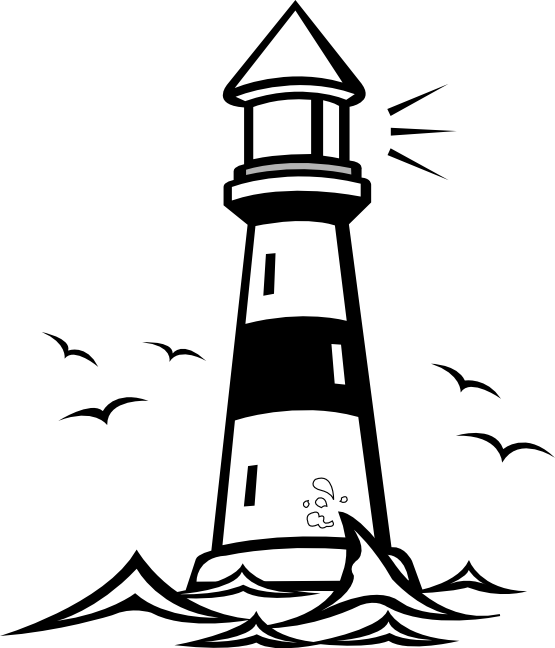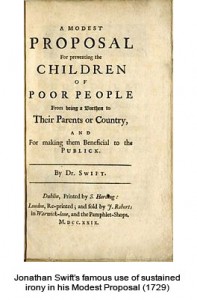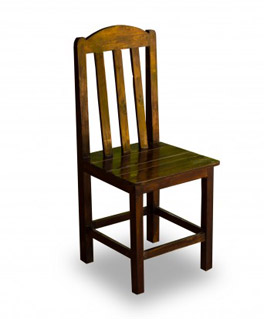MONTHLY BLOG 48, THE ART OF PUBLIC PRESENTATION – WITH STRUCTURED CONTENT AND A FINAL SNAPPY DICTUM
If citing, please kindly acknowledge copyright © Penelope J. Corfield (2014)
The art of public presentation in the academic world and beyond has improved no end, during my working lifetime. But still there are some who do it badly. Often noted personalities think that their notability will suffice, in lieu of a structured talk. They give voice to a meandering stream of consciousness, which is completely forgettable once the flow stops. People are generally polite, in such circumstances, but secretly disappointed. So here are some hi-speed tips for better impact, with warm thanks to many friends and former students for good discussions on these matters.1 To follow my own advice about providing a clear structure to my contents, I’ve cut my recommendations down to nine (the magical number 3×3): the first three about preparation; the next three about modes of presentation; and the final three about the contents.
1/ Know the scheduled timing for your presentation and stick to it. Even inspirational speakers pall if they run on for too long. And it’s especially unforgiveable to over-run if you are on a panel with other speakers. By the way, if you bodge the timing by mistake, the chair should call you to a halt. In those circumstances, don’t gabble the rest of the talk at high speed; but switch immediately into your conclusion with good grace (and do better next time).
2/ Check the level at which your presentation should be pitched and present your material accordingly. If addressing beginners on a subject, then give them clear framework information and definitions. But, with experts, aim high, because they’ll quickly become bored if you tell them at length things which they already know well. A mixed audience of experts and non-experts is the most difficult to handle. You must cover the basics, or otherwise the beginners will be stranded. But try to impart the basics in a sharp and interesting way, to keep the experts happy. Phrases like ‘as you know’ or ‘as you will recall’ or ‘it’s worth repeating’ help to soothe experts in the audience that you are not patronising them.
3/ Speak freely, rather than read from a script. Above all, don’t read aloud from Powerpoint. It’s fine to work from prompt notes on cards, paper or Powerpoint, as academics often need precise data and quotations. It’s also excellent to use illustrations as well as words on Powerpoint, especially if the illustrations have the quality of surprise – and can be used as counterpoint to the talk rather than a literal visualisation. For beginners in academic life, it’s ok to read from complete scripts in the early days, as a learning process. But even then it’s helpful to include short sections of free-speaking (for example, when switching from one section of the talk to another). Any break into free-speaking renders the voice more natural and makes it much easier for audiences to follow alertly. Over time, the proportion of free-speaking should be increased and reading from script decreased.

|
Hogarth’s Scholars at a Lecture (1736) satirises both the boring tutor and the sleepy students. |
4/ Vary your vocal register: ring the changes as you talk, in terms of pitch, pace, vocabulary, gesture – and use of pauses. The aim is to avoid a droning monotone, which numbs the listeners’ brains. Fortunately, the human voice is a tremendous instrument for communication. Very few people use their full vocal range. Women in particular are often socialised to talk in light, high voices. But we all have great potential for variation. Try a few vocal exercises to discover your own vocal range and then use its pitch to the full, with an associated diversity of pace, terminology and gesture – and, now and then, some good strategic pauses.
5/ Use humour when appropriate but don’t force things if the subject doesn’t lend itself to joking. Shared laughter is a great way of binding an audience together. But don’t worry if your topic (say: long-term trends in the price of grain) is not a natural rib-tickler. It’s enough to be pleasant, cheerful, and smiling. While doing that, avoid all facetious remarks, such as ‘of course, we’d all rather be in the pub’. Such would-be matey comments are annoying and suggest a lack of confidence. If your audience really wants to be in the pub, it probably will be.
6/ Look all round the room regularly, sweeping people lightly with your gaze: this exercise indicates that you are addressing everyone – not just talking to those in the front row – or to your own shoes. It’s called the ‘lighthouse beam’.2 Of course, the gaze must not turn into a rude or pointed stare. But the round-room gaze is an excellent way of ‘collecting’ a roomful of disparate people into one meeting. There is always an unspoken compact of reciprocity between speakers and audiences. The speaker has to offer something approximating to the advertised topic, in a competent manner. The audience in turn has to be prepared to listen and to respond. In politics, an unwilling audience may respond with heckling, boos or more active forms of rejection.3 In academic life, unhappy audiences rarely heckle. They merely don’t pay attention – and play games on their laptops. A lighthouse beam around the room, impersonal but penetrating, checks that you have everyone’s attention – and signals that’s what you want.
 7/ Structure your contents. This is one of the most important arts of public presentation, and one of the most unduly neglected. Structuring, also known as ‘framing’, conveys immediately to the audience that you know what you are doing. And it allows them to follow your train of thought and simultaneously to understand how the specific details fit into the bigger picture. That way, audiences have much better chance of remembering your message. They can log your points under the headings, which you should announce as you go through the presentation. By contrast, a stream-of-consciousness speech, without any declared framework, is like a soufflé – it quickly flops. There are lots of ways of structuring, depending upon the material. Every presentation should have an Introduction and a Conclusion, with the contents grouped into meaningful sections. At very least, a list of numbered points will help. But that can be rather mechanical. One strong option is a binary division: ‘on the one hand’ … ‘on the other’. That’s the classic structure of a lawsuit, testing prosecution against defence. Another favourite is a threefold division. Three main heads let the argument develop some complexity (not everything is either black or white) whilst still offering a manageable structure that the audience can recollect. But it’s enough to group your material in a manner that makes sense to you – and then to convey that message to the audience.
7/ Structure your contents. This is one of the most important arts of public presentation, and one of the most unduly neglected. Structuring, also known as ‘framing’, conveys immediately to the audience that you know what you are doing. And it allows them to follow your train of thought and simultaneously to understand how the specific details fit into the bigger picture. That way, audiences have much better chance of remembering your message. They can log your points under the headings, which you should announce as you go through the presentation. By contrast, a stream-of-consciousness speech, without any declared framework, is like a soufflé – it quickly flops. There are lots of ways of structuring, depending upon the material. Every presentation should have an Introduction and a Conclusion, with the contents grouped into meaningful sections. At very least, a list of numbered points will help. But that can be rather mechanical. One strong option is a binary division: ‘on the one hand’ … ‘on the other’. That’s the classic structure of a lawsuit, testing prosecution against defence. Another favourite is a threefold division. Three main heads let the argument develop some complexity (not everything is either black or white) whilst still offering a manageable structure that the audience can recollect. But it’s enough to group your material in a manner that makes sense to you – and then to convey that message to the audience.
8/ Start with something striking (an event, a quotation, an illustration) to get people’s attention and ensure that the Conclusion responds to the Introduction. Rounds out the discussion and recaps the main points. Incidentally, having a good conclusion ready means that, should you have to stop suddenly, you can quickly cut to the conclusion and still end with a clear message.
9/ End the conclusion with a final snappy dictum, rather than a meek ‘Thank You’. Thanking the audience for listening may seem polite, even rather cute. These days, it seems to have become almost de rigueur. At least, it does tell the audience when to clap. But it’s better to end with a pithy dictum. Something memorable, not meek. Ok, there may be a brief silence while people realise that you have come to a halt. But that’s good. It gives time to digest and to recollect.
Incidentally, how did Churchill end his ‘Blood, Toil, Tears and Sweat’ speech to the Commons on 13 May 1940? 4 Not with thanks but with a summons. It was a bit clichéd but it was unmistakeable: ‘Come then, let us go forward together with our united strength’. We can’t all be Churchills on such a stage. Yet we all have scope for improvement. Excelsior!
1 Especially to Tony Belton, Margaret Bird, Lissi Corfield and the international array of colleagues who attended the International Society for C18 Studies (ISECS) Seminar for Early Career Scholars at Manchester in September 2014.
2 For the use of the lighthouse beam when chairing a discussion, see PJC BLOG no. 42: Chairing Seminars and Lectures (June 2014).
3 For the sometimes violent opposition to women speaking in public, see PJC BLOG no. 47, Women and Public Speaking: And Why It has Taken So Long to get There (Nov. 2014).
For further discussion, see Twitter
To read other discussion-points, please click here
To download Monthly Blog 48 please click here








 Matching images to script: People in general express great appreciation of the visuals within the DVD. Credit here goes especially to the picture research of graphic designer Suzanne Perkins and to the film research of the producer/director Mike Marchant. Together they found masses of previously unknown material. Brilliant. It’s a great encouragement for researchers to realise exactly how much remains to be discovered (or sometimes rediscovered) in local archives and film libraries. Visual material is now getting a proper share of attention, transforming how history can be presented. That’s now being taken for granted, although there are still some bastions to fall before the incoming tide.
Matching images to script: People in general express great appreciation of the visuals within the DVD. Credit here goes especially to the picture research of graphic designer Suzanne Perkins and to the film research of the producer/director Mike Marchant. Together they found masses of previously unknown material. Brilliant. It’s a great encouragement for researchers to realise exactly how much remains to be discovered (or sometimes rediscovered) in local archives and film libraries. Visual material is now getting a proper share of attention, transforming how history can be presented. That’s now being taken for granted, although there are still some bastions to fall before the incoming tide. On the other hand, it’s very good to show a striking image just before it’s mentioned in the script. Then as the narrator stresses something or other, viewers share a sense of realisation. Whereas if the images follow just too late, the reverse effect is achieved. Viewers feel slightly insulted: ‘why are you showing me an XXX now, I already know that, because the narrator has just told me’.
On the other hand, it’s very good to show a striking image just before it’s mentioned in the script. Then as the narrator stresses something or other, viewers share a sense of realisation. Whereas if the images follow just too late, the reverse effect is achieved. Viewers feel slightly insulted: ‘why are you showing me an XXX now, I already know that, because the narrator has just told me’. But very hard work. If I’d known at the start what it all entailed, I’d have declined to take on the octopus task of script-writing, co-directing, and organising lots of other people. Especially as I was doing all this in my so-called spare time, as a busy academic historian. Not that I can complain about the Battersea comrades, who shared in the research, the editing, the performances and the design of the DVD cover and publicity. The voices on the DVD are all those of local activists and residents, led by the celebrated actors Tim West and Prunella Scales. One and all were positive and very patient, during the 18 months of protracted effort.
But very hard work. If I’d known at the start what it all entailed, I’d have declined to take on the octopus task of script-writing, co-directing, and organising lots of other people. Especially as I was doing all this in my so-called spare time, as a busy academic historian. Not that I can complain about the Battersea comrades, who shared in the research, the editing, the performances and the design of the DVD cover and publicity. The voices on the DVD are all those of local activists and residents, led by the celebrated actors Tim West and Prunella Scales. One and all were positive and very patient, during the 18 months of protracted effort. The third and final point relates to the challenge of bringing a historical script up until the present day, without making the conclusion too dated. I decided to make the narrative gradually speed up, with a more leisurely style for the exciting early years and a more staccato survey of the later twentieth century. That manoeuvre was devised to generate narrative drive. But one result was that various sections had to be axed, late in the day. Hence one serious criticism was that the role of pioneering women in Battersea Labour Party, which had appeared in the first Powerpoint lecture, was cut from the DVD. It was a shame but artistically necessary, because too long a retrospective review undermined the narrative momentum. (With the later resources of my website, I could have published the entire script, including axed sections, as a way of making amends).
The third and final point relates to the challenge of bringing a historical script up until the present day, without making the conclusion too dated. I decided to make the narrative gradually speed up, with a more leisurely style for the exciting early years and a more staccato survey of the later twentieth century. That manoeuvre was devised to generate narrative drive. But one result was that various sections had to be axed, late in the day. Hence one serious criticism was that the role of pioneering women in Battersea Labour Party, which had appeared in the first Powerpoint lecture, was cut from the DVD. It was a shame but artistically necessary, because too long a retrospective review undermined the narrative momentum. (With the later resources of my website, I could have published the entire script, including axed sections, as a way of making amends). Copies of the DVD Red Battersea, 1908-2008 are obtainable for £5.00 (in plastic cover) from Tony Belton =
Copies of the DVD Red Battersea, 1908-2008 are obtainable for £5.00 (in plastic cover) from Tony Belton = 








